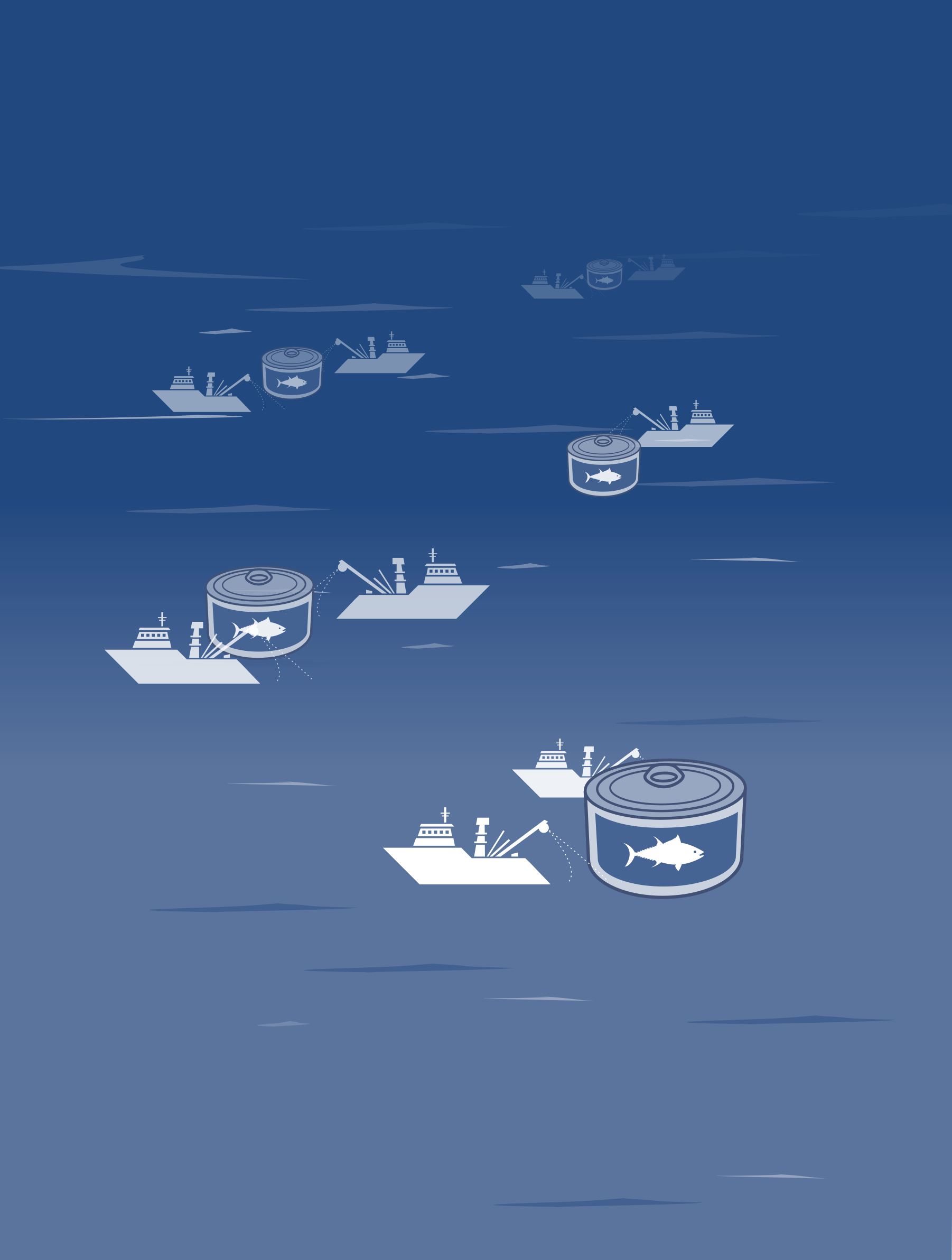ECONOMICAL
CHALLENGES
CONTEXT
Tunas constitute species of major interest for the world’s fishery products markets, notably due to the simplicity involved in the processing and circulation of canned products. The canned fish market has been globalized for several decades but remains dominated by a few large multinational companies, which compete for the raw materials caught in the three major oceans of the planet.
From a cost-benefit perspective, the use of FADs gives tropical purse seiners about twice as much yield and therefore better profitability than targeting free schools. Even if the unit value of catches around FADs, composed mainly of skipjack tuna, is lower than that of catches from free schools, where the proportion of large tropical tunas (yellowfin tuna) is greater, the higher yield from FAD sets largely compensates for the price gap.
The costs of effort are also reduced by the lower searching time for the targeted species, explaining the generalization of their use.
From a cost-benefit perspective, the use of FADs gives tropical purse seiners about twice as much yield and therefore better profitability than targeting free schools. Even if the unit value of catches around FADs, composed mainly of skipjack tuna, is lower than that of catches from free schools, where the proportion of large tropical tunas (yellowfin tuna) is greater, the higher yield from FAD sets largely compensates for the price gap.
The costs of effort are also reduced by the lower searching time for the targeted species, explaining the generalization of their use.
However, the success of FAD fishing pushes shipowners to invest more and more in echosounder buoys, auxiliary vessels, as well as increasingly in larger purse seiners. Making a parallel with the ecological trap, this trend could lead to an economic trap if the number of allowed FADs per vessel was meant to be reduced.

OBSTACLES
Considering costs and revenues, is it possible to isolate the net benefit attributable to the use of FADs by tropical tuna purse seiners operating in the Indian Ocean?
How to evaluate and internalize the external cost of FAD fishing?
Is there any economic optimum to be considered in the overall number of FADs in use?
How to evaluate and internalize the external cost of FAD fishing?
Is there any economic optimum to be considered in the overall number of FADs in use?
ACTIONS
Using economic data from the French tropical purse seine fishery in the Indian Ocean, the economic cost of FAD fishing in relation to the generated benefits will assessed.
An econometric model considering the catch-effort relationship will be developed, including variables to characterize the type of fishing effort which is deployed. Both purse seine fishing techniques, free schools and FAD sets, will be assessed.
An accounting approach based on the marginal operating cost and benefit of using FADs will also be developed to estimate the foregone value of reducing the use of FADs.
An econometric model considering the catch-effort relationship will be developed, including variables to characterize the type of fishing effort which is deployed. Both purse seine fishing techniques, free schools and FAD sets, will be assessed.
An accounting approach based on the marginal operating cost and benefit of using FADs will also be developed to estimate the foregone value of reducing the use of FADs.
